Discover 35 hidden attractions, cool sights, and unusual things to do in Cairo (Egypt). Don't miss out on these must-see attractions: Egyptian Museum, Khan el-Khalili, and Great Sphinx of Giza. Also, be sure to include Great Pyramid of Giza in your itinerary.
Below, you can find the list of the most amazing places you should visit in Cairo (Al Qahirah).
Table of Contents
Egyptian Museum
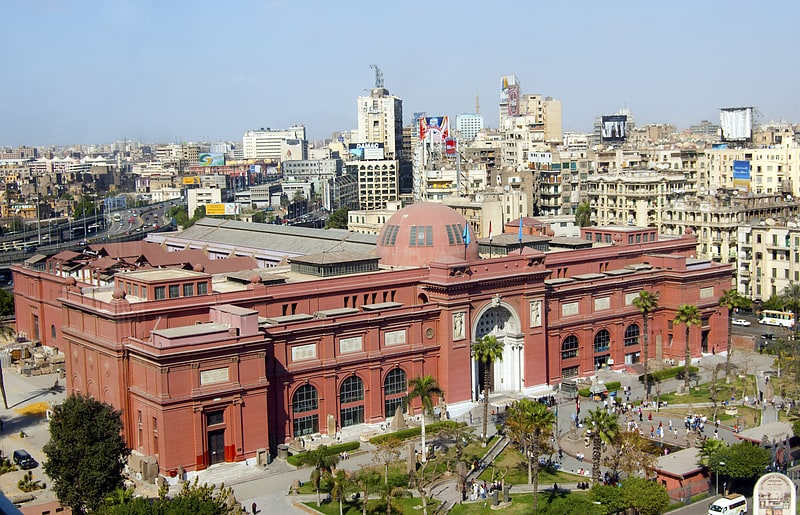
Also known as: المتحف المصري
Museum in Cairo, Egypt. The Museum of Egyptian Antiquities, known commonly as the Egyptian Museum or the Cairo Museum, in Cairo, Egypt, is home to an extensive collection of ancient Egyptian antiquities. It has 120,000 items, with a representative amount on display and the remainder in storerooms. Built in 1901 by the Italian construction company, Garozzo-Zaffarani, to a design by the French architect Marcel Dourgnon, the edifice is one of the largest museums in the region. As of March 2019, the museum was open to the public. In 2022, the museum is due to be superseded by the newer and larger Grand Egyptian Museum at Giza.[1]
Address: Midan El Tahrir, 11511 Cairo (وسط البلد)
Khan el-Khalili

Also known as: خان الخليلي
Major bazaar selling souvenirs and crafts. Khan el-Khalili is a famous bazaar and souq in the historic center of Cairo, Egypt. Established as a center of trade in the Mamluk era and named for one of its several historic caravanserais, the bazaar district has since become one of Cairo's main attractions for tourists and Egyptians alike. It is also home to many Egyptian artisans and workshops involved in the production of traditional crafts and souvenirs. The name Khan el-Khalili historically referred to a single building in the area; today it refers to the entire shopping district.[2]
Address: Gohar Al Kaed, El-gamaleya, Qism El-gamaleya, Cairo, Cairo (القاهرة الإسلامية)
Great Sphinx of Giza
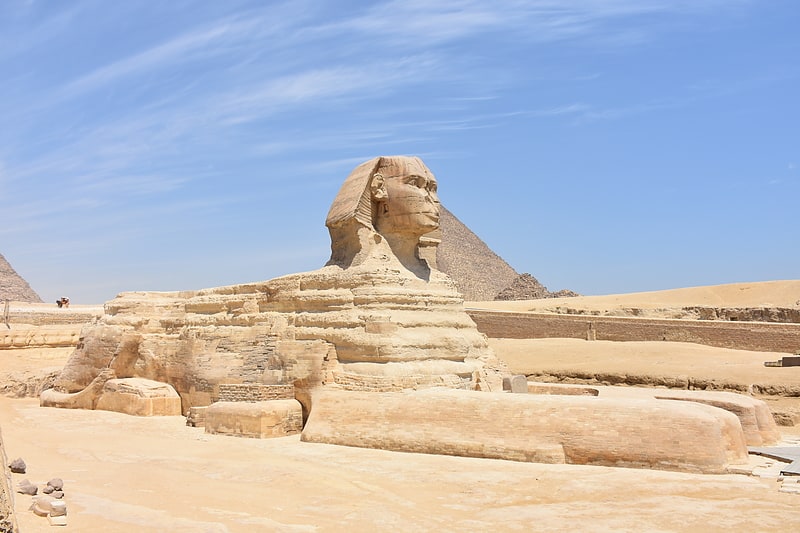
Also known as: أبو الهول
Monolithic Ancient Egyptian monument. The Great Sphinx of Giza, commonly referred to as the Sphinx of Giza, Great Sphinx or just the Sphinx, is a limestone statue of a reclining sphinx, a mythical creature with the head of a human, and the body of a lion. Facing directly from west to east, it stands on the Giza Plateau on the west bank of the Nile in Giza, Egypt. The face of the Sphinx appears to represent the pharaoh Khafre.
Cut from the bedrock, the original shape of the Sphinx has been restored with layers of limestone blocks. It measures 73 m (240 ft) long from paw to tail, 20 m (66 ft) high from the base to the top of the head and 19 m (62 ft) wide at its rear haunches. Its nose was broken off for unknown reasons between the 3rd and 10th centuries AD.
The Sphinx is the oldest known monumental sculpture in Egypt and one of the most recognisable statues in the world. The archaeological evidence suggests that it was created by ancient Egyptians of the Old Kingdom during the reign of Khafre (c. 2558–2532 BC).[3]
Address: Al Ahram, Cairo
Great Pyramid of Giza
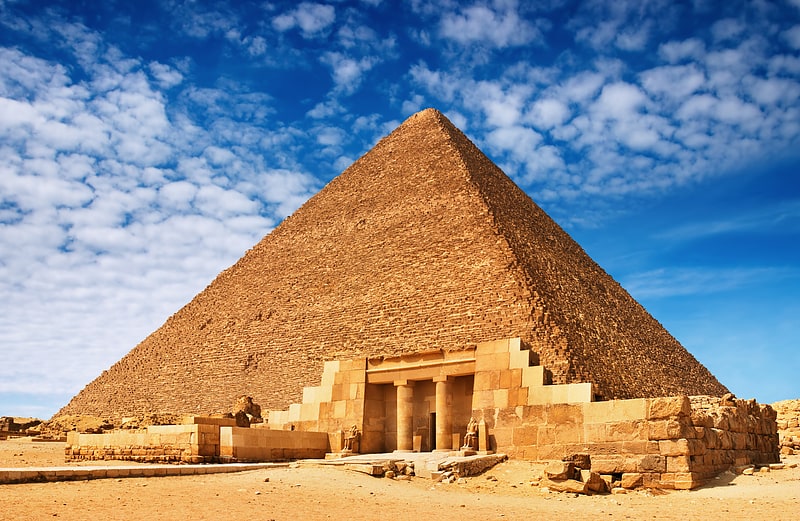
Also known as: الهرم الأكبر
Tomb in Egypt. The Great Pyramid of Giza is the oldest and largest of the pyramids in the Giza pyramid complex bordering present-day Giza in Greater Cairo, Egypt. It is the oldest of the Seven Wonders of the Ancient World, and the only one to remain largely intact.
Egyptologists conclude that the pyramid was built as a tomb for the Fourth Dynasty Egyptian pharaoh Khufu and estimate that it was built in the 26th century BC during a period of around 27 years.
Initially standing at 146.5 metres (481 feet), the Great Pyramid was the tallest man-made structure in the world for more than 3,800 years. Over time, most of the smooth white limestone casing was removed, which lowered the pyramid's height to the present 138.5 metres (454.4 ft). What is seen today is the underlying core structure. The base was measured to be about 230.3 metres (755.6 ft) square, giving a volume of roughly 2.6 million cubic metres (92 million cubic feet), which includes an internal hillock.
The dimensions of the pyramid were 280 royal cubits (146.7 m; 481.4 ft) high, a base length of 440 cubits (230.6 m; 756.4 ft), with a seked of 5+1/2 palms (a slope of 51°50'40").
The Great Pyramid was built by quarrying an estimated 2.3 million large blocks weighing 6 million tonnes in total. The majority of stones are not uniform in size or shape and are only roughly dressed. The outside layers were bound together by mortar. Primarily local limestone from the Giza Plateau was used. Other blocks were imported by boat down the Nile: White limestone from Tura for the casing, and granite blocks from Aswan, weighing up to 80 tonnes, for the King's Chamber structure.
There are three known chambers inside the Great Pyramid. The lowest was cut into the bedrock, upon which the pyramid was built, but remained unfinished. The so-called Queen's Chamber and King's Chamber, that contains a granite sarcophagus, are higher up, within the pyramid structure. Khufu's vizier, Hemiunu (also called Hemon), is believed by some to be the architect of the Great Pyramid. Many varying scientific and alternative hypotheses attempt to explain the exact construction techniques.
The funerary complex around the pyramid consisted of two mortuary temples connected by a causeway (one close to the pyramid and one near the Nile), tombs for the immediate family and court of Khufu, including three smaller pyramids for Khufu's wives, an even smaller "satellite pyramid" and five buried solar barges.[4]
Giza pyramid complex
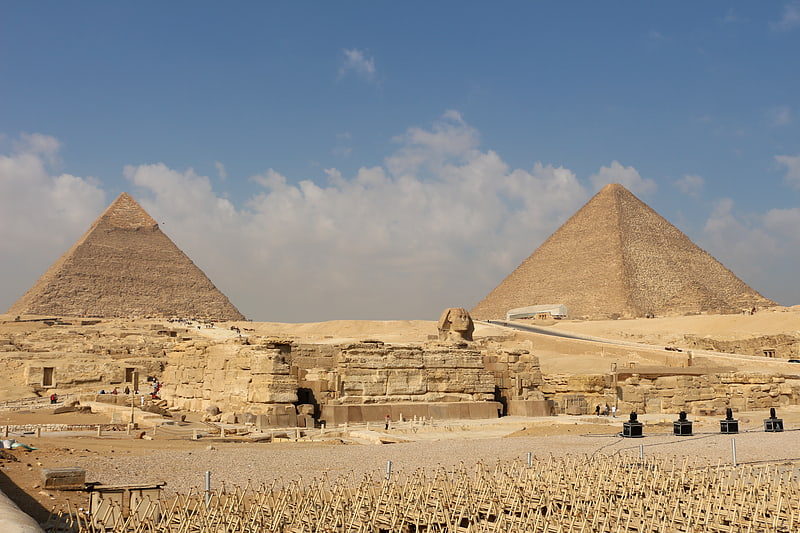
Also known as: مجمع أهرامات الجيزة
Archaeological site in Egypt. The Giza pyramid complex, also called the Giza necropolis, is the site on the Giza Plateau in Greater Cairo, Egypt that includes the Great Pyramid of Giza, the Pyramid of Khafre, and the Pyramid of Menkaure, along with their associated pyramid complexes and the Great Sphinx of Giza. All were built during the Fourth Dynasty of the Old Kingdom of Ancient Egypt, between 2600 and 2500 BC. The site also includes several cemeteries and the remains of a workers' village.
The site is at the edges of the Western Desert, approximately 9 kilometres (5.6 mi) west of the Nile River in the city of Giza, and about 13 kilometres (8 mi) southwest of the city centre of Cairo. Along with nearby Memphis, the site was inscribed on the UNESCO World Heritage List in 1979.
The Great Pyramid and the Pyramid of Khafre are the largest pyramids built in ancient Egypt, and they have historically been common as emblems of Ancient Egypt in the Western imagination. They were popularised in Hellenistic times, when the Great Pyramid was listed by Antipater of Sidon as one of the Seven Wonders of the World. It is by far the oldest of the Ancient Wonders and the only one still in existence.[5]
Gayer-Anderson Museum
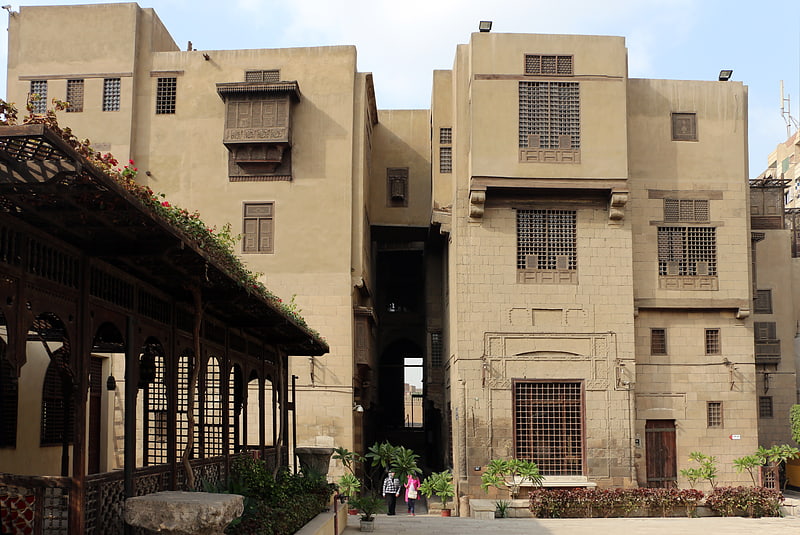
Also known as: متحف جاير أندرسون
Cultural museum with artwork and furniture. The Gayer-Anderson Museum is an art museum located in Cairo, Egypt. It is situated adjacent to the Mosque of Ahmad ibn Tulun in the Sayyida Zeinab neighborhood. The building takes its name from Major R.G. Gayer-Anderson Pasha, who resided in the house between 1935 and 1942 with special permission from the Egyptian Government. The museum is noted for being one of the best-preserved examples of 17th-century domestic architecture left in Cairo, and also for its vast collection of furniture, carpets, curio, and other objects.[6]
Address: 4 Maydan Ibn Tulun, 11511 Cairo (القاهرة الإسلامية)
Mosque of Muhammad Ali
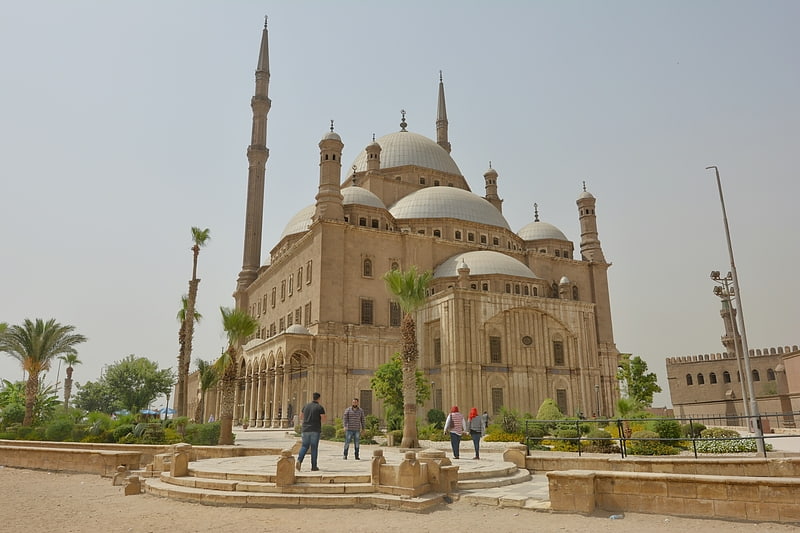
Also known as: مسجد محمد علي
Imposing, alabaster-clad mosque. The Great Mosque of Muhammad Ali Pasha or Alabaster Mosque is a mosque situated in the Citadel of Cairo in Egypt and was commissioned by Muhammad Ali Pasha between 1830 and 1848.
Situated on the summit of the citadel, this Ottoman mosque, the largest to be built in the first half of the 19th century, is, with its animated silhouette and twin minarets, the most visible mosque in Cairo.
The mosque was built in memory of Tusun Pasha, Muhammad Ali's eldest son, who died in 1816.
This mosque, along with the citadel, is one of the landmarks and tourist attractions of Cairo and is one of the first features to be seen when approaching the city from any direction.[7]
Address: Al Abageyah, Cairo (القاهرة الإسلامية)
Babylon Fortress

Babylon Fortress is an ancient fortress in the Nile Delta, located in the area known today as Coptic Cairo. It is situated in the former area of the Heliopolite Nome, upon the east bank of the Nile, at latitude 30°N, near the commencement of the Pharaonic Canal, from the Nile to the Red Sea.
It was at the boundary between Lower and Middle Egypt, where the river craft paid tolls when ascending or descending the Nile. Diodorus ascribes the erection of the first fort to rebel Assyrian captives in the reign of Sesostris, and Ctesias dates it to the time of Semiramis; but Josephus, with greater probability, attributes its structure to some Babylonian followers of Cambyses, in 525 BC. The Romans built a new fortress nearer the river, with typically Roman red and white banded masonry.
Within the fortress's enclosure are the Coptic Museum, a convent, and several churches, including the Church of St. George and the Hanging Church.[8]
Tahrir Square
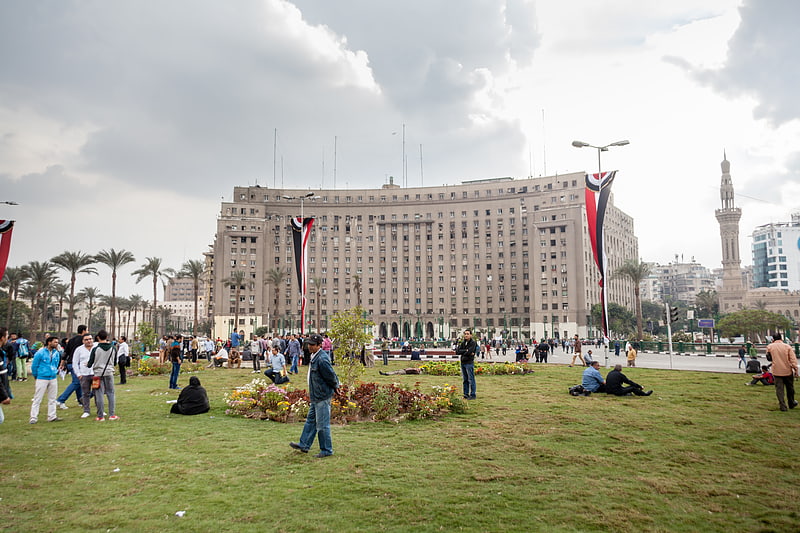
Also known as: ميدان التحرير
Historic square and site for revolution. Tahrir Square, also known as "Martyr Square", is a major public town square in downtown Cairo, Egypt. The square has been the location and focus for political demonstrations in Cairo since the early 20th century; the city's previous central square was Salah al-Din Square.
Notable events at Tahrir square include the demonstrations that led to the 2011 Egyptian revolution and the resignation of President Hosni Mubarak.[9]
Pyramid of Khafre

Also known as: هرم خفرع
Historical landmark in Egypt. The Pyramid of Khafre or of Chephren is the second-tallest and second-largest of the 3 Ancient Egyptian Pyramids of Giza and the tomb of the Fourth-Dynasty pharaoh Khafre, who ruled c. 2558−2532 BC.[10]
Pyramid of Khentkaus I

The Pyramid complex of Khentkaus I or Step tomb of Khentkaus I is a Fourth Dynasty two-stepped tomb built for the Queen Mother Khentkaus I in Giza. The tomb, built in two phases coinciding with its two steps, was originally known as the fourth pyramid of Giza. In the first phase, a nearly square block of bedrock, around which the stone had been quarried for the Giza pyramids, was utilized to construct her tomb and encased with fine white Tura limestone. In the second phase, most likely in the Fifth Dynasty, her tomb was enlarged with a large limestone structure built on top of the bedrock block. The Egyptologist Miroslav Verner suggests that this may have been intended to convert her tomb into a pyramid, but was abandoned as a result of stability concerns. South-west of the tomb was a long boat pit, which housed the Night boat of Re. A companion day boat has not been found. A chapel was built into the tomb superstructure, with a large granite entrance bearing the queen's name and titles. One of her titles was of particular interest because it had not previously been known.
The chapel connected to a three niched statuary room to its west, and a long hall to its north. The hall to the north housed two pink granite false doors, below one of which was a sloped passage into the tomb substructure comprising an antechamber and a burial chamber bisected in two. In the east half of the burial chamber were entrances to six storage magazines, and two more pink granite false doors in its west wall. The west half of the chamber was once occupied by a large alabaster sarcophagus, fragments of which constituted the only significant finds by Selim Hassan. Carved into the north wall was a shelf which once stored the canopic jars of the burial. A small square niche had been cut into the south wall.
A settlement was built around her tomb, and likely occupied by priests of her mortuary cult until the end of the Sixth Dynasty. The settlement was bounded to the north and south by long perimeter walls running east then south. Along a causeway leading from the chapel through the town, ten carefully planned homes were built, suggesting that the town was designed and not the result of natural urban development. The town was further outfitted with granaries and a large water tank. To the south-west were Menkaure's valley temple, and an annex described by Hassan as Khentkaus' valley temple.[11]
Al-Azhar Mosque

Also known as: الجامع الأزهر
Mosque in Cairo, Egypt. Al-Azhar Mosque, known simply in Egypt as al-Azhar, is an Egyptian mosque in Islamic Cairo. Jawhar al-Siqilli commissioned its construction for the newly established capital city in 970. Its name is usually thought to derive from az-Zahrāʾ, a title given to Fatimah bent Muhammad, the Prophet of Islam. It was the first mosque established in Cairo, a city that has since gained the nickname "the City of a Thousand Minarets".
After its dedication in 972, and with the hiring by mosque authorities of 35 scholars in 989, the mosque slowly developed into what is today the second oldest continuously run university in the world after Al Karaouine in Idrisid Fes. Al-Azhar University has long been regarded as the foremost institution in the Islamic world for the study of Sunni theology and sharia, or Islamic law. The university, integrated within the mosque as part of a mosque school since its inception, was nationalized and officially designated an independent university in 1961, following the Egyptian Revolution of 1952.
Over the course of its over a millennium-long history, the mosque has been alternately neglected and highly regarded. Because it was founded as a Shiite Ismaili institution, Saladin and the Sunni Ayyubid dynasty that he founded shunned al-Azhar, removing its status as a congregational mosque and denying stipends to students and teachers at its school. These moves were reversed under the Mamluk Sultanate, under whose rule numerous expansions and renovations took place. Later rulers of Egypt showed differing degrees of deference to the mosque and provided widely varying levels of financial assistance, both to the school and to the upkeep of the mosque. Today, al-Azhar remains a deeply influential institution in Egyptian society that is highly revered in the Sunni Muslim world and a symbol of Islamic Egypt.[12]
Address: El-Darb El-Ahmar, Cairo (القاهرة الإسلامية)
Islamic Cairo
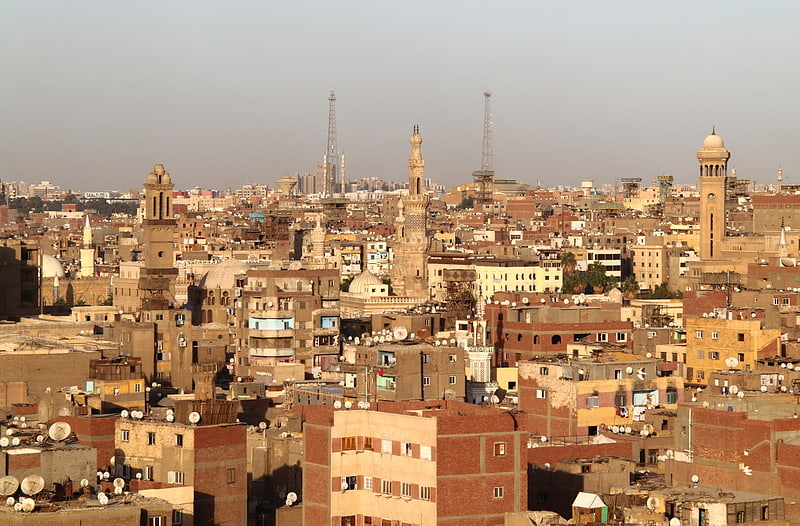
Also known as: قاهرة المعز
Historical landmark in Cairo. Islamic Cairo, also called Historic Cairo or Medieval Cairo, refers generically to the historic areas of Cairo, Egypt, that existed before the city's modern expansion during the 19th and 20th centuries; particularly the central parts around the old walled city and around the Citadel of Cairo. The name "Islamic" Cairo refers not to a greater prominence of Muslims in the area but rather to the city's rich history and heritage since its foundation in the early period of Islam, while distinguishing it from with the nearby Ancient Egyptian sites of Giza and Memphis. This area holds one of the largest and densest concentrations of historic architecture in the Islamic world. It is characterized by hundreds of mosques, tombs, madrasas, mansions, caravanserais, and fortifications dating from throughout the Islamic era of Egypt. In 1979, the United Nations Educational, Scientific and Cultural Organization proclaimed Historic Cairo a World Cultural Heritage site, as "one of the world's oldest Islamic cities, with its famous mosques, madrasas, hammams and fountains" and "the new centre of the Islamic world, reaching its golden age in the 14th century."[13]
Cairo Tower
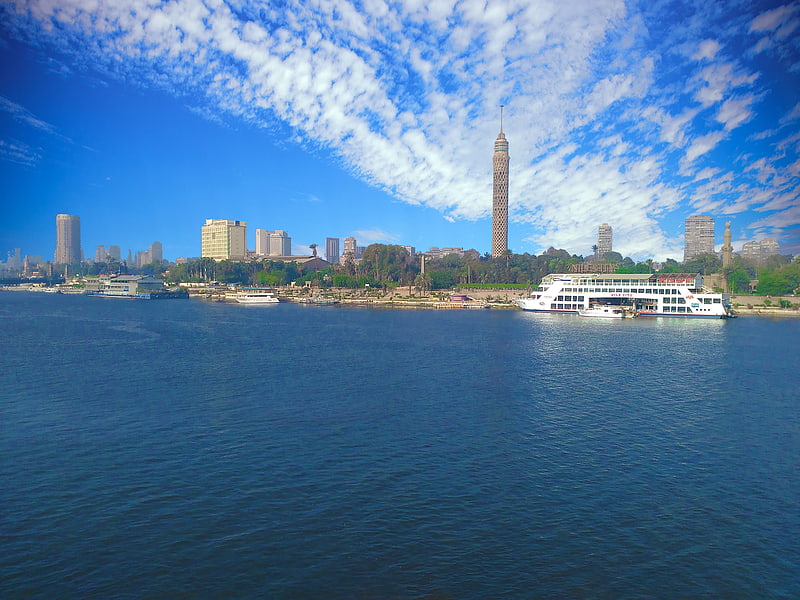
Also known as: برج القاهرة
Egypt's tallest tower, with viewing deck. The Cairo Tower is a free-standing concrete tower in Cairo, Egypt. At 187 m, it is the tallest structure in Egypt and North Africa. It was the tallest structure in Africa for ten years until 1971, when it was surpassed by Hillbrow Tower in South Africa.
One of Cairo's well-known modern monuments, sometimes considered Egypt's second most famous landmark after the Pyramids of Giza, it stands in the Gezira district on Gezira Island in the River Nile, close to downtown Cairo.[14]
Address: El Zohriya Garden St, Cairo
Pyramid of Menkaure
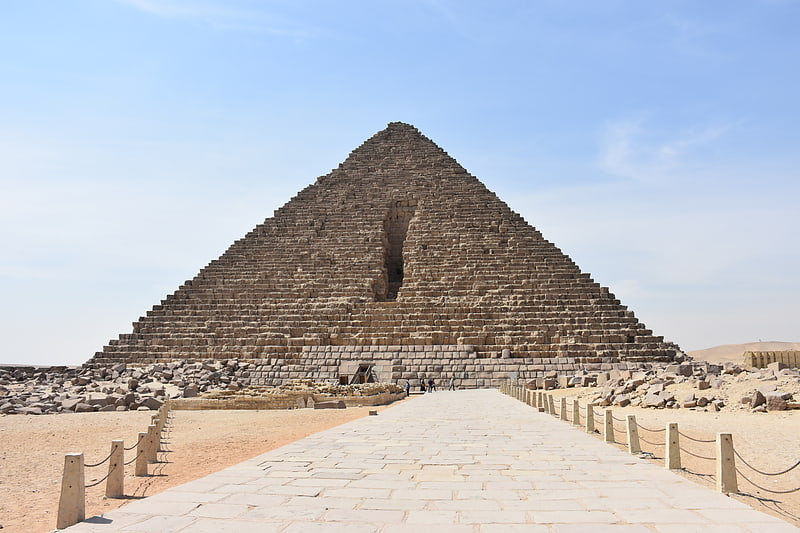
Also known as: هرم منقرع
Circa 25th-century BCE pyramid at Giza. The Pyramid of Menkaure is the smallest of the three main Pyramids of Giza, located on the Giza Plateau in the southwestern outskirts of Cairo, Egypt. It is thought to have been built to serve as the tomb of the Fourth Dynasty Egyptian Pharaoh Menkaure.[15]
Mosque of Ibn Tulun
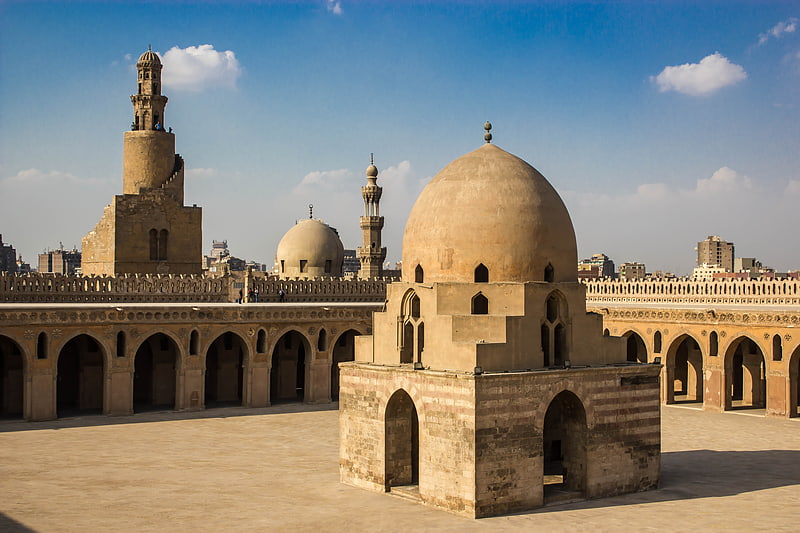
Also known as: مسجد ابن طولون
Grandiose ancient Islamic monument. The Mosque of Ibn Tulun is located in Cairo, Egypt. It is one of the oldest mosques in Egypt as well as the whole of Africa surviving in its full original form, and is the largest mosque in Cairo in terms of land area. It is built around an open square courtyard which allows natural light to travel through. Ibn Tulun Mosque features ancient architecture styles of Egypt, its decorations being created from carved stucco and wood. This mosque is a popular tourist attraction.[16]
Address: Al-Basatin, off Al-Saliba Street, 11511 Cairo (القاهرة الإسلامية)
Cairo Citadel
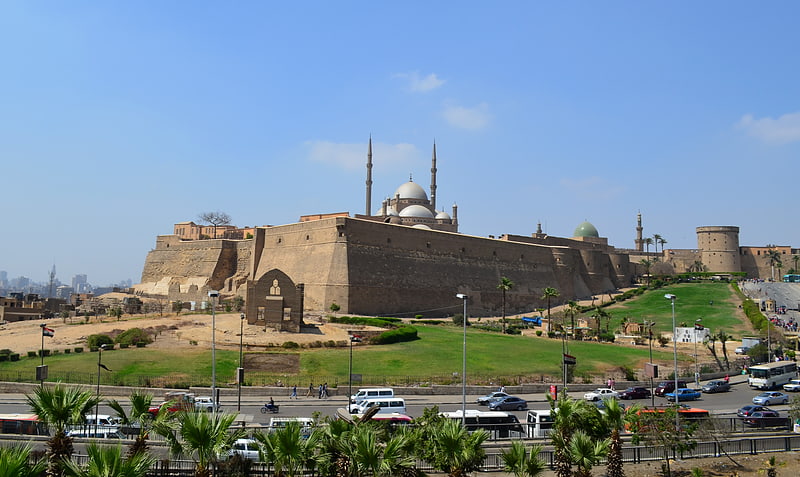
Also known as: قلعة صلاح الدين الأيوبي
Landmark medieval Islamic fortress. The Citadel of Cairo or Citadel of Saladin is a medieval Islamic-era fortification in Cairo, Egypt, built by Salah ad-Din and further developed by subsequent Egyptian rulers. It was the seat of government in Egypt and the residence of its rulers for nearly 700 years from the 13th to the 19th centuries. Its location on a promontory of the Mokattam hills near the center of Cairo commands a strategic position overlooking the city and dominating its skyline. At the time of its construction, it was among the most impressive and ambitious military fortification projects of its time. It is now a preserved historic site, including mosques and museums.
In addition to the initial Ayyubid-era construction begun by Saladin in 1176, the Citadel underwent major development during the Mamluk Sultanate that followed, culminating with the construction projects of Sultan al-Nasir Muhammad in the 14th century. In the first half of the 19th century Muhammad Ali Pasha demolished many of the older buildings and built new palaces and monuments all across the site, giving it much of its present form. In the 20th century it was used as a military garrison by the British occupation and then by the Egyptian army until being opened to the public in 1983. In 1976, it was proclaimed by UNESCO as a part of the World Heritage Site Historic Cairo (Islamic Cairo) which was "the new centre of the Islamic world, reaching its golden age in the 14th century."[17]
Address: Salah Salem Rd., Cairo (القاهرة الإسلامية)
Al-Azhar Park
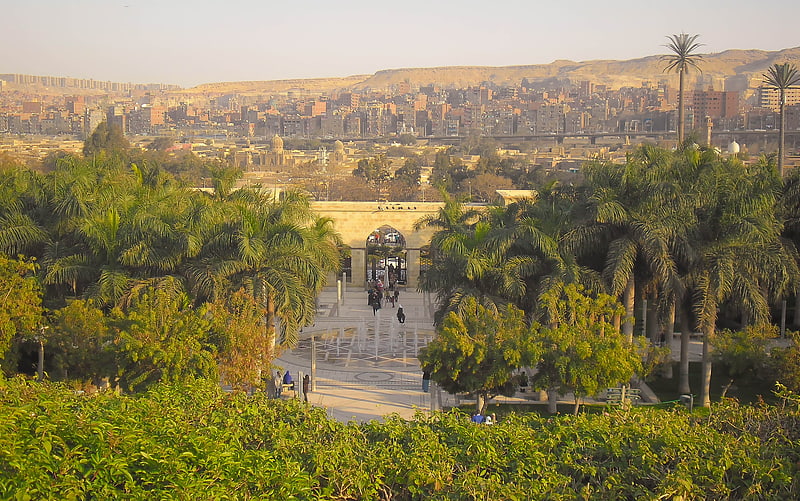
Also known as: حديقة الأزهر
Landscaped gardens with city views. Al-Azhar Park is a public park located in Cairo, Egypt.
Among several honors, this park is listed as one of the world's sixty great public spaces by the Project for Public Spaces. The park was created by the Historic Cities Support Programme of the Aga Khan Trust for Culture, an entity of the Aga Khan Development Network. The park was developed at a cost in excess of USD $30 million, its funding a gift to Cairo from Aga Khan IV, a descendant of the Fatimid Caliphs of Cairo.
The park project, an urbanism initiative, included:
- the development of the park
- archeology involving a 12th-century Ayyubid wall
- historic building rehabilitation (the 14th Century Umm Sultan Shaban Mosque, the 13th century Khayrbek complex, and the Darb Shoughlan School)
- several quality of life improvement initiatives requiring skills training, area rehabilitation, microfinance, and support in the areas of health and education, among others.
Address: Darassa Hill, 11511 Cairo
Sultan Hassan Mosque
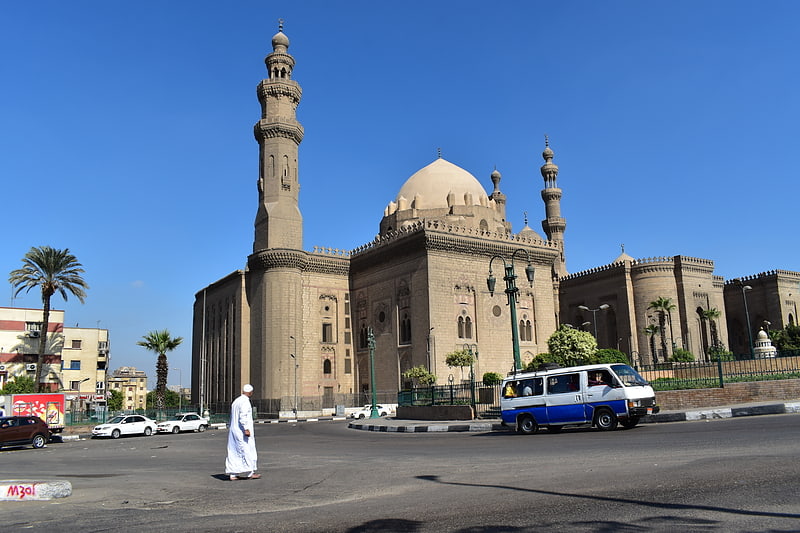
Also known as: مسجد ومدرسة السلطان الناصر حسن
14th-century religious education center. The Mosque-Madrasa of Sultan Hassan is a monumental mosque and madrasa located in Salah al-Din Square in the historic district of Cairo, Egypt. It was built between 1356 and 1363 during the Bahri Mamluk period, commissioned by Sultan an-Nasir Hasan. The mosque was considered remarkable for its massive size and innovative architectural components, and is still considered one of the most impressive historic monuments in Cairo today.[19]
Address: Maydan Salah al-Din, 11511 Cairo (القاهرة الإسلامية)
Dream Park

Theme park, Amusement park
Address: 6th Of October, Cairo
Giza Zoo

Also known as: حديقة حيوان الجيزة
Zoo with lions, elephants and monkeys. The Giza Zoo is a zoological garden in Giza, Egypt. It is one of the few green areas in the city, and includes Giza's largest park. The zoo covers about 80 acres, and is home to many endangered species, as well as a selection of endemic fauna.
The first to be built in the Middle East, rare species have been successfully bred in the zoo—including the first California sea lion to be born in the region.[20]
Address: Charles De Gaulle Street, Giza, 11511 Cairo
Coptic Museum
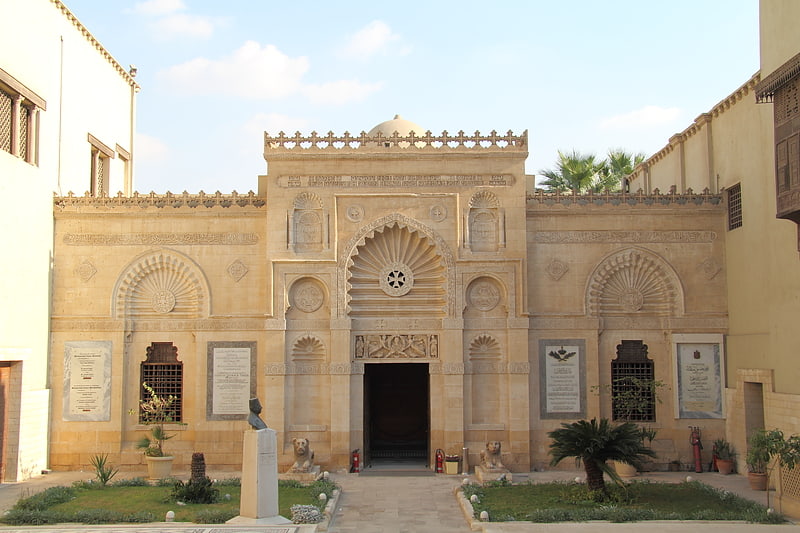
Also known as: المتحف القبطي
Museum of ancient Egyptian Christian art. The Coptic Museum is a museum in Coptic Cairo, Egypt with the largest collection of Coptic Christian artifacts in the world. It was founded by Marcus Simaika in 1908 to house Coptic antiquities. The museum traces the history of Egypt from its beginnings to the present day. It was erected on 8,000 square meter land offered by the Coptic Orthodox Church, under the guardianship of Pope Cyril V.
The Coptic museum houses the world's most important examples of Coptic art.[21]
Address: No 4 Fakhry Abd el Nour street, 11511 Cairo (مصر القديمة)
Khedivial Opera House
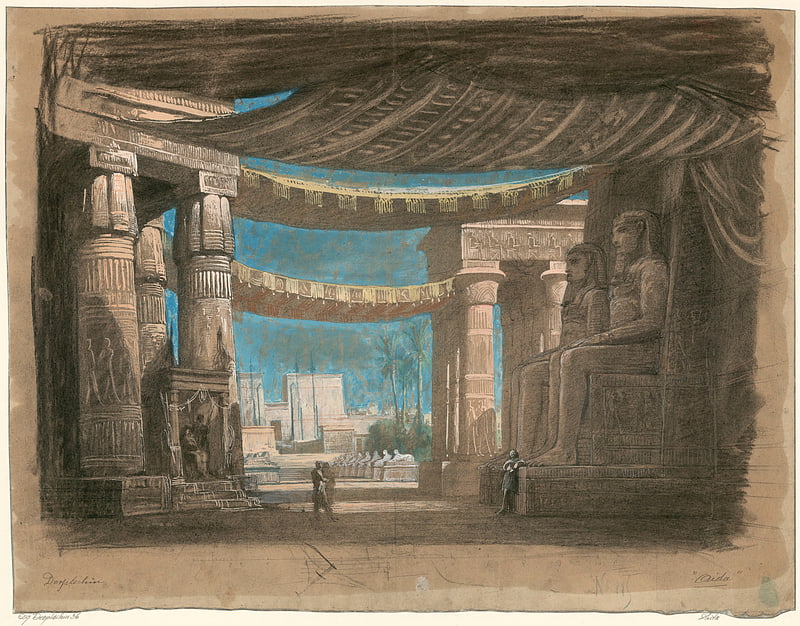
Opera house in Cairo, Egypt. The Khedivial Opera House or Royal Opera House was an opera house in Cairo, Egypt, the oldest opera house in all of Africa. It was inaugurated on 1 November 1869 and burned down on 28 October 1971.
The opera house was built on the orders of the Khedive Ismail to celebrate the opening of the Suez Canal. The architects Pietro Avoscani (from Livorno) and Rossi designed the building. It seated approximately 850 people and was made mostly of wood. It was located between the districts of Azbakeya and Ismailyya in Egypt's capital city.
Verdi's opera Rigoletto was the first opera performed at the opera house on 1 November 1869. Ismail planned a grander exhibition for his new theatre. After months of delay due to the outbreak of the Franco-Prussian War, Verdi's new opera, Aida, received its world premiere at the Khedivial Opera House on 24 December 1871.
In the early morning hours of 28 October 1971, the opera house burned to the ground. The all-wooden building was quickly consumed, and only two statues made by Mohamed Hassan survived.
After the original opera house was destroyed, Cairo was without an opera house for nearly two decades until the opening of the new Cairo Opera House in 1988.
The site of the Khedivial Opera House has been rebuilt into a multi-story concrete car garage. The square (to the south of Al Ataba metro station) overlooking the building's location, is still called Opera Square (Meidan El Opera)[22]
Al-Mahmoudia Mosque
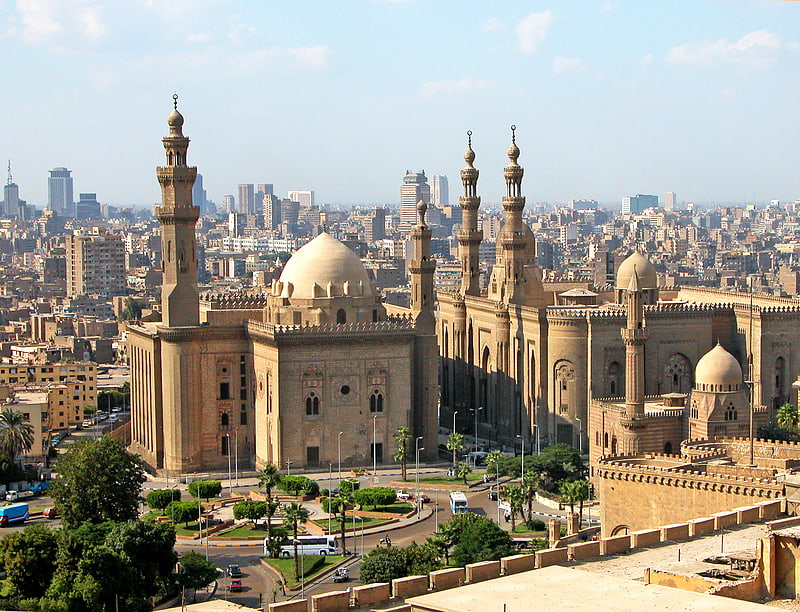
Al-Mahmoudia Mosque or the Mosque of Mahmud Pasha is a historic mosque in the city of Cairo, Egypt. It is located at the Salah al-Din Square in the Citadel of Cairo area, in front of Bab al-Azab gate of the citadel. There are Sultan Hassan Mosque and Al-Rifa'i Mosque to the east.[23]
Sultana Malak Palace

Sultana Malak's Palace is a palace located in the Heliopolis Suburb of Cairo.[24]
Egyptian National Military Museum

Also known as: المتحف الحربي المصري
Museum in Egypt. The Egyptian National Military Museum is the official museum of the Egyptian Army.[25]
Address: The Saladin Citadel of Cairo, Cairo (القاهرة الإسلامية)
Hanging Church
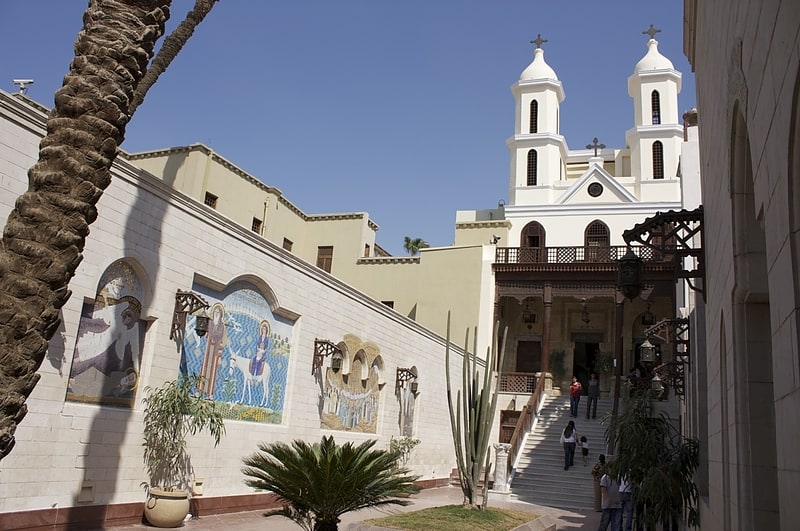
Also known as: الكنيسة المعلقة
Coptic place of worship with icons. Saint Virgin Mary's Coptic Orthodox Church, also known as the Hanging Church, is one of the oldest churches in Egypt and the history of a church on this site dates to the third century. It belongs to the Coptic Orthodox Church of Alexandria.[26]
Address: Shar'a Mari Girgis Street, 11511 Cairo (مصر القديمة)
Madrasa of Umm al-Sultan Sha'ban
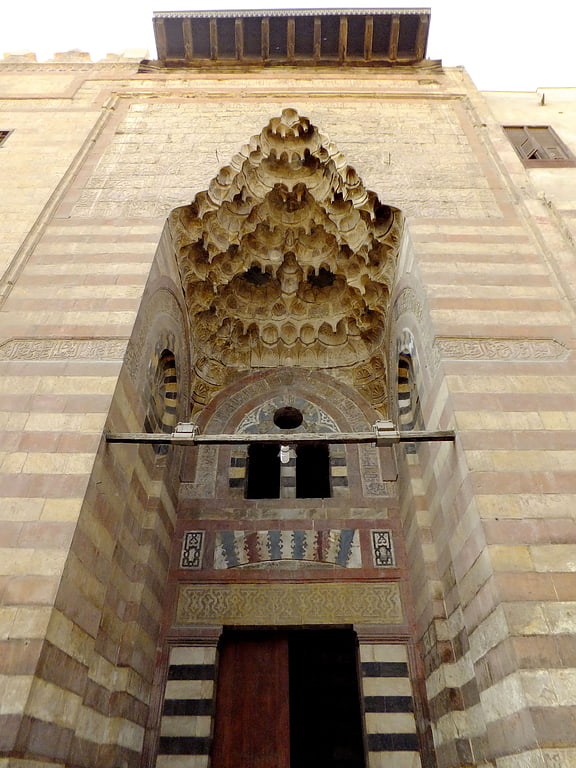
The Madrasa of Umm al-Sultan Sha'ban is a Mamluk-era complex located in the Al-Darb al-Ahmar area of Islamic Cairo in Egypt. It was founded or built in 1368-69 CE on the order of Sultan al-Ashraf Sha'ban in honour of his mother, Khawand Baraka. It is located outside Bab Zuweila along al-Tabbana street, and is adjoined to the north by the Bayt al-Razzaz palace. The complex is made up of a college, mausoleum, water trough, and a primary school.[27]
Bayt Al-Suhaymi
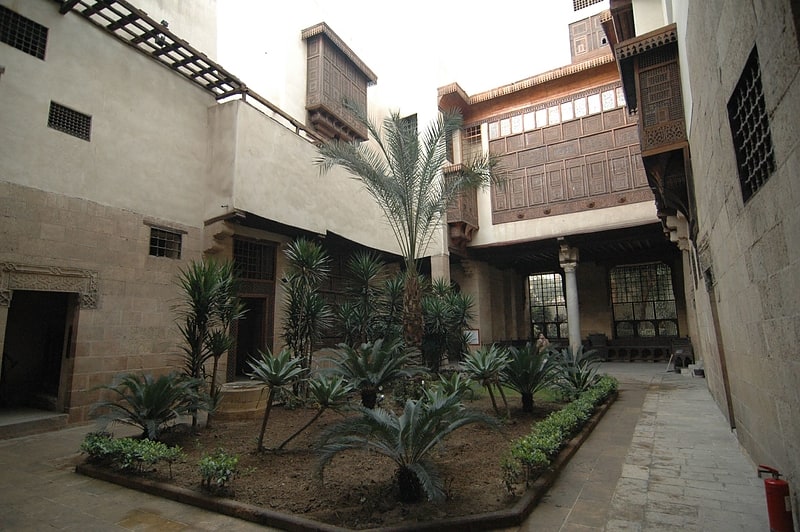
Also known as: بيت السحيمي
Museum in Cairo, Egypt. Bayt Al-Suhaymi is an Islamic themed house and museum in Cairo, Egypt. It was originally built in 1648 by Abdel Wahab el Tablawy along the Darb al-Asfar, a very prestigious and expensive part of Islamic Cairo. In 1796 it was purchased by Sheikh Ahmed as-Suhaymi whose family held it for several subsequent generations. The Sheikh greatly extended the house from its original through incorporating neighbouring houses into its structure.
The house is built around a sahn in the centre of which there is a small garden with plants and palm trees. From here several of the fine mashrabiya windows in the house can be seen. Today the house is a museum which foreign visitors can tour for 35 Egyptian pounds (15 for students). Much of the marble floor work, wooden furniture, and ceiling decor is still intact. Restoration took place after the earthquake of 1992.[28]
Address: Haret Al Darb al Asfar, 11511 Cairo
Al-Hakim Mosque
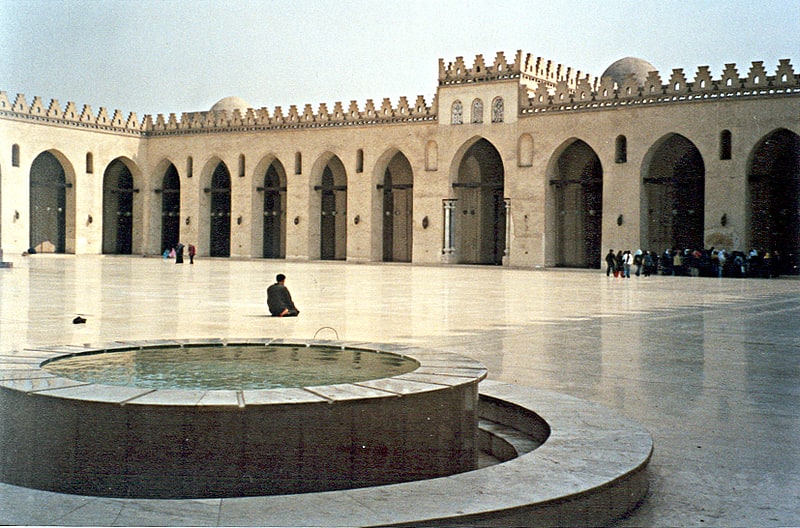
Also known as: مسجد الحاكم بأمر الله
Landmark 10th-century mosque. The Mosque of al-Hakim, nicknamed al-Anwar, is a major Islamic religious site in Cairo, Egypt. It is named after Al-Hakim bi-Amr Allah, the sixth Fatimid caliph and 16th Ismaili Imam. This mosque originally started being built by al-Aziz, the son of Mu'izz, and the father of al Hakim, in 990 A.D. It was named after Al Hakim because he had finished and established it.
This Fatimid style mosque was built over the span of twenty years with considerable communal effort. It is located in Islamic Cairo, on the east side of Muizz Street, just south of Bab Al-Futuh (the northern gate).[29]
Address: 154 Al Moez Ldin Allah Al Fatmi, El-Gamaleya, Cairo
Al-Hussein Mosque

Also known as: مسجد الإمام الحسين
Revered holy site with sacred remains. The Imam Hussein Mosque or Jame Sayyidna Husayn is a mosque and mausoleum of Husayn ibn Ali, originally built in 1154, and then later reconstructed in 1874. The mosque is located in Cairo, Egypt, near the Khan El-Khalili bazaar, near-by the famous Al Azhar Mosque, in an area known as Al-Hussain. It is considered to be one of the holiest Islamic sites in Egypt. Some Shia Muslims believe that Husayn's head is buried on the grounds of the mosque where a mausoleum is located today and considered to be what is left of the Fatimid architecture in the building.[30]
Address: 36 Al Mashhad Al Husseini, El-Gamaleya, Cairo (القاهرة الإسلامية)
Mosque of Amr ibn al-As
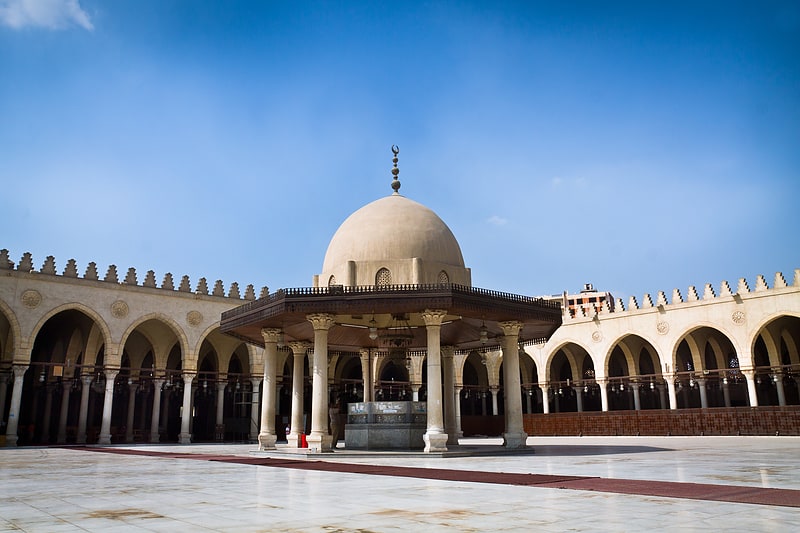
Also known as: مسجد عمرو بن العاص
Historic mosque with a large courtyard. The Mosque of Amr ibn al-As, or Taj al-Jawame', or Masjid Ahl ar-Rayah, or Jame’ al-Ateeq, was originally built in 641–642 AD, as the center of the newly founded capital of Egypt, Fustat. The original structure was the first mosque ever built in Egypt and the whole of Africa. For 600 years, the mosque was also an important center of Islamic learning until Al-Muizz's Al-Azhar Mosque in Islamic Cairo replaced it. Through the twentieth century, it was the fourth largest mosque in the Islamic world.
The location for the mosque was the site of the tent of the commander of the Muslim army, general Amr ibn al-As. One corner of the mosque contains the tomb of his son, 'Abd Allah ibn 'Amr ibn al-'As. Due to extensive reconstruction over the centuries nothing of the original building remains, but the rebuilt Mosque is a prominent landmark and can be seen in what today is known as Old Cairo. It is an active mosque with a devout congregation, and when prayers are not taking place, it is also open to visitors and tourists.[31]
Address: حسن الأنور، Ad Deyorah, Cairo (مصر القديمة)
Bayt al-Sinnari

Bayt al-Sinnari, built in 1794, is one of the remaining bourgeois mansions in medieval Cairo, Egypt. Managed by the Bibliotheca Alexandrina, the house has become an important cultural center after its restoration.[32]
Baron Empain Palace

Also known as: قصر البارون إمبان
Historical landmark in Egypt. The Baron Empain Palace, better known as Le Palais Hindou, is a distinctive and historic Hindu temple inspired mansion in Heliopolis, a suburb northeast of central Cairo, Egypt.[33]
Address: El Oruba St, Cairo
Child Museum
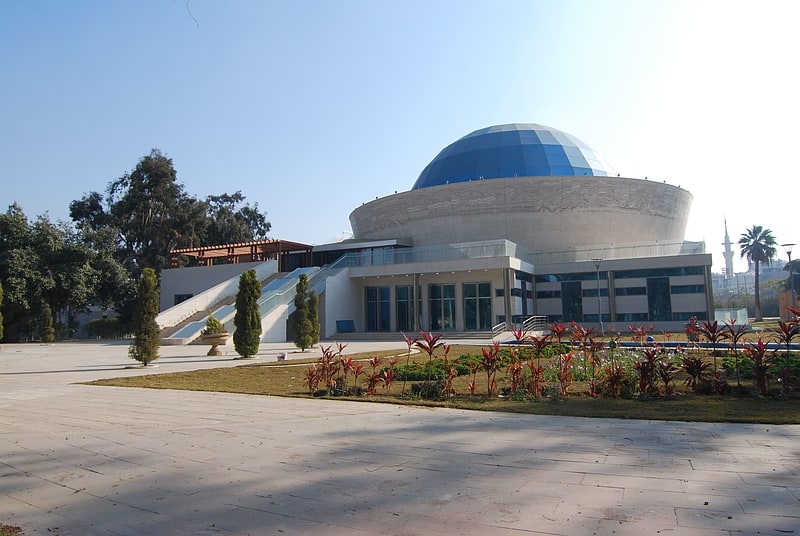
Also known as: متحف الطفل بالقاهرة
Museum in Egypt. The Children's Civilization and Creativity Center is a children's museum in Heliopolis, Cairo, Egypt, established in 1986. It was renovated twice in 1996 and in 2012. It is a large museum and cultural center covering 4,000 square meters in a 14 Feddan, 14.3 acre landscape. It was built by the Heliopolis Society for the benefit of all the children of Egypt. This work involved contributions from Egyptian and international museums and institutions.
The museum was designed by experts from Egypt, UK and the USA and built by museum specialists from all over the world who have contributed to the museum to assist children and young adults to learn through hands on exhibits, inter-actives, computer games, and a spectacular dome show exhibit that takes the visitor through the history of science in Egypt.
In May 2012 it won the UK's Museum and Heritage International Award.[34]
Address: 34 Abou Bakr El Seddik St. Heliopolis, 11511 Cairo